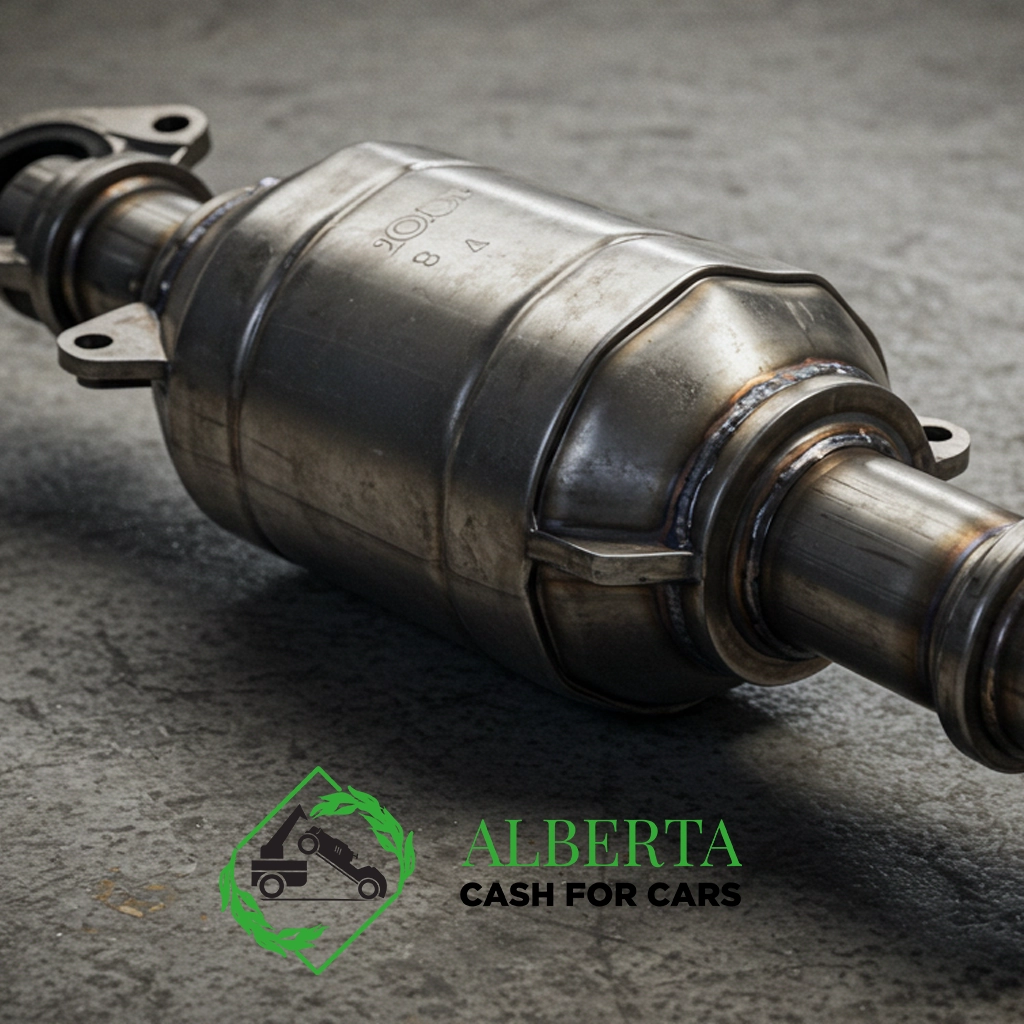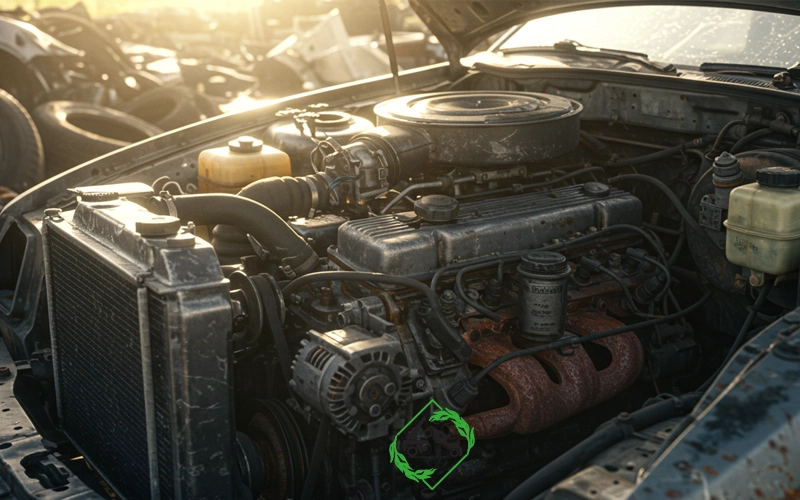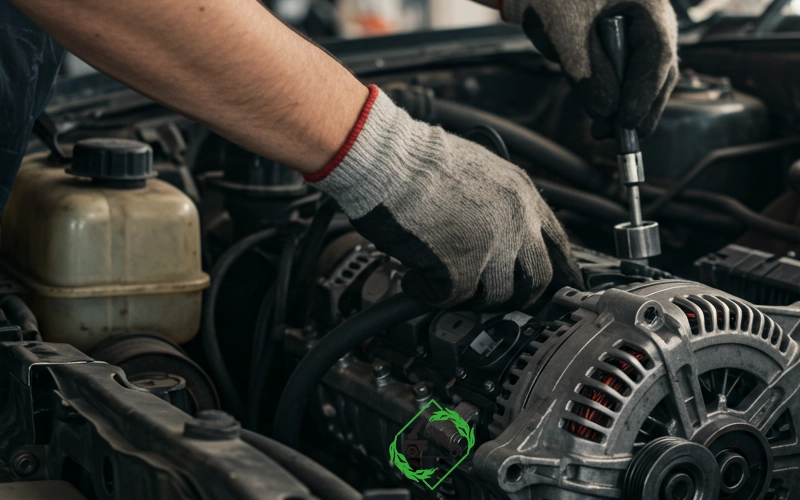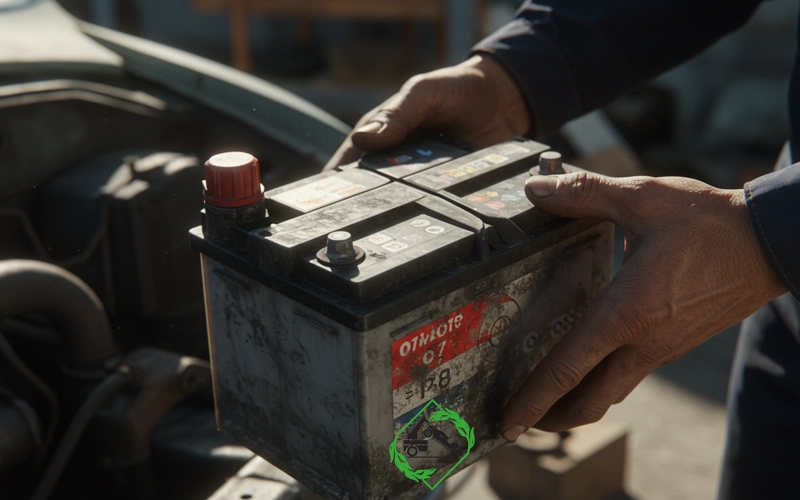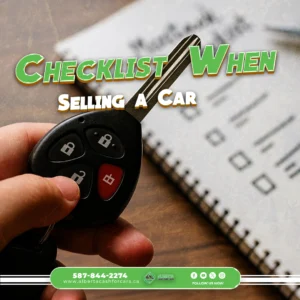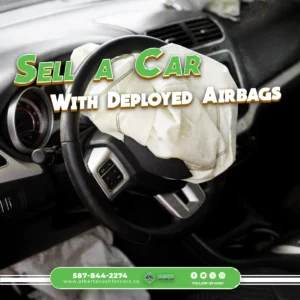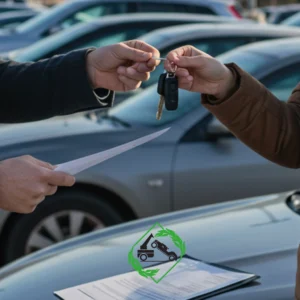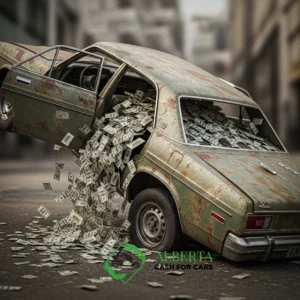Has that old clunker finally given up the ghost? Or maybe it’s just reached that point where the repair costs far outweigh its actual worth. You’re probably thinking about scrapping it, and that’s a smart move. But before you call it quits and send it off to the great garage in the sky, have you ever wondered if there’s any hidden treasure left inside? You might be surprised to learn that even a seemingly worthless vehicle contains some of the most valuable parts in your junk car that can put a decent chunk of change back in your pocket.
It’s easy to look at a rust-eaten hulk and see nothing but a pile of metal. But underneath the dust and grime, there are components that retain significant value, even if the car itself is dead. Understanding what these parts are can make a big difference in how you approach selling your end-of-life vehicle. You don’t want to just give it away when you could be getting more for its salvageable bits.
So, let’s explore exactly what constitutes the most valuable parts in your scrap car, helping you maximize your return and feel good about responsibly recycling your old ride and having the best Cash for Cars Calgary Experience.
Why Do “Junk” Parts Still Have Value?
Before delving into the specifics of the most valuable parts in your junk car, it’s essential to grasp why these seemingly defunct components retain significant worth, extending beyond mere scrap metal. Firstly, a substantial demand for used parts exists, driven by consumers seeking affordable alternatives to costly new components, particularly for older or discontinued vehicle models; consequently, salvage yards and auto recyclers actively dismantle cars to fulfill this market need.
Secondly, the intrinsic raw material value of metals such as steel, aluminum, copper, and especially precious metals found within certain components, fluctuates with global market prices, contributing to their inherent worth. Thirdly, for many remanufacturable parts like batteries, alternators, and starters, “core charges” are applied when purchasing new replacements, signifying that your old, non-functional unit still holds value as a component suitable for remanufacturing.
Lastly, contemporary environmental regulations strongly encourage the recovery of as much material as possible from end-of-life vehicles to minimize waste and ecological impact, thereby incentivizing the extraction of these valuable components. Understanding these underlying market and environmental demands underscores precisely why it is so crucial for maximizing its value.
The Top Contenders: Most Valuable Parts in Your Junk Car
Let’s break down the components that usually fetch the highest returns, even from a non-running vehicle.
1. The Catalytic Converter: The Unexpected Goldmine
Seriously, this small, unassuming component located in your exhaust system (between the engine and the muffler) is often the single most valuable part in your scrap car. Why? Because it contains precious metals:
- Platinum (Pt)
- Palladium (Pd)
- Rhodium (Rh)
These metals are incredibly expensive and are used to convert harmful pollutants into less toxic gases. Their market value fluctuates wildly, but even a single catalytic converter can be worth hundreds, sometimes even over a thousand, dollars depending on its size, age, and the specific car it came from. Thieves often target catalytic converters because of this high scrap value.
2. Engine and Transmission: The Big-Ticket Items
Many specialized companies actively seek old engines and transmissions for rebuilding or remanufacturing, paying for your old unit as a “core” that they can refurbish and resell. Alternatively, even a seemingly dead engine can yield valuable individual parts, such as a perfectly usable crankshaft or cylinder head, that can be salvaged and sold to those in need of specific components. Finally, if these units are truly beyond any form of repair or reuse, their immense scrap metal value, derived from their substantial ferrous (iron or steel) and potentially non-ferrous (aluminum) content based on their sheer size and weight, ensures they contribute significantly to your vehicle’s overall worth.
The value here depends heavily on the make, model, and year of your car. A large V8 engine from a popular truck will generally be worth more than a small 4-cylinder from an economy car.
Read Also: Selling a Car With a Bad Transmission | A Successful Guide
3. Battery: Powering Value
Car batteries contain lead, which is highly recyclable. Even a dead battery has value and is almost always accepted by scrap yards and auto parts stores (often with a “core charge” credit if you’re buying a new one). While not a huge payout, it’s easy money for something you were probably just going to discard.
4. Wheels and Tires: Rolling in Value
Alloy Rims: If your car has aluminum alloy wheels rather than steel rims, they are significantly more valuable as scrap metal (aluminum fetches a much higher price than steel). Also, if they are in good condition (no major bends, cracks, or curb rash), they might be valuable as used wheels for someone looking to replace damaged ones or upgrade their car.
Good Condition Tires: If your tires still have decent tread depth and are free of major damage, they can be sold individually or in sets. Someone might need a spare or a set for a different car. This is less about scrap value and more about resale value. Even if they’re not perfect, they’ll usually still be accepted by a scrapyard for recycling.
5. Alternator and Starter: The Electrical Duo
These essential electrical components are often rebuilt or recycled. They contain valuable metals, particularly copper wiring, and can be remanufactured. Similar to engines and transmissions, they often have a core charge associated with them. Even if non-functional, their core value contributes to the most valuable parts in your junk car or scrap car.
6. Radiator and AC Compressor: More Than Just Cooling
- Radiator: Often made of aluminum or a combination of aluminum and copper, radiators are valuable for their metal content. Copper and brass radiators are especially prized.
- AC Compressor: Like alternators and starters, AC compressors are often rebuilt or recycled for their internal components and metal content.
7. Car Body (Scrap Metal): The Sheer Weight
While individual components might fetch more per pound, the sheer volume of steel in your car’s body is a significant contributor to its overall scrap value. The heavier the car, the more steel it contains, and the more it’s worth as scrap metal. This is the bulk of what a typical scrapyard is after.
8. Headlights and Taillights: Surprisingly in Demand
Especially for newer or luxury vehicles, headlights and taillights can be very expensive to replace new. If yours are intact, undamaged, and functional, they can be sold as used parts, often fetching a good price from someone who’s had a minor fender bender or needs a replacement.
9. Infotainment Systems, GPS Units, and Other Electronics
If your junk car had an advanced factory-installed infotainment system, a GPS unit, or other sophisticated electronic modules, these can sometimes be removed and sold, especially if they are in working order. They can be particularly valuable if they’re from a popular or luxury brand.
How to Maximize Value from Your Junk Car
Now that you know what the most valuable parts in your scrap car are, how do you ensure you get the most for them?
- Assess Condition: While the car itself might be junk, note the condition of the specific valuable parts. Is the catalytic converter still there? Are the wheels intact? Does the engine turn over (even if it doesn’t start)?
- Contact Multiple Buyers: Don’t just go with the first offer. Contact several salvage yards, auto recyclers, and “cash for cars” services in your area.
- Be Transparent: Accurately describe the vehicle’s condition, including what works and what doesn’t. Mention any particularly valuable parts you know are intact (e.g., “the catalytic converter is original and hasn’t been removed”).
- Consider Selling Parts Separately (If You Have the Time and Expertise): If you’re mechanically inclined and have the time, you could remove the most valuable parts (like the catalytic converter, good wheels, or even the engine or transmission if it’s a popular core) and sell them individually. Then, sell the remaining shell to a scrap yard. This usually yields the highest profit but requires significant effort and knowledge.
- Choose a Reputable Service: Ensure the buyer is a licensed auto recycler or scrap yard. They will handle the proper disposal and paperwork. For anyone in Alberta looking to part ways with a junk car and understand what makes it valuable, Alberta Cash For Cars specializes in offering competitive cash payments for vehicles in any condition, handling all the removal logistics across the province.
Conclusion
It’s a common misconception that a non-running or damaged car is completely worthless. By understanding what constitutes the most valuable parts in your junk car or scrap car, you can significantly increase your chances of getting a fair payout. From the precious metals in your catalytic converter to the sheer weight of your engine and the recyclability of your battery, there’s hidden value waiting to be uncovered. So, before you simply give your old car away, take a moment to assess its hidden assets. It could be the easiest money you make this year!

